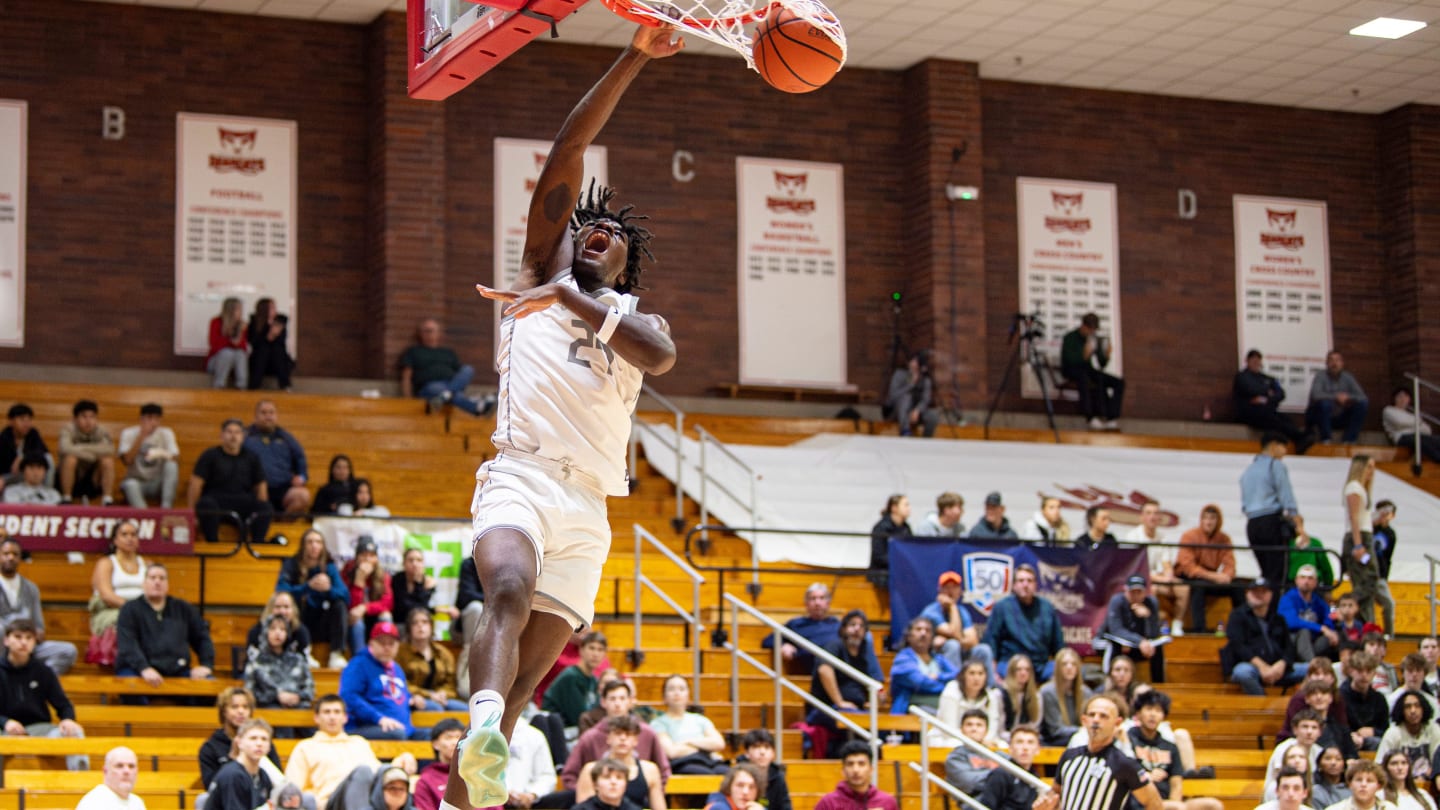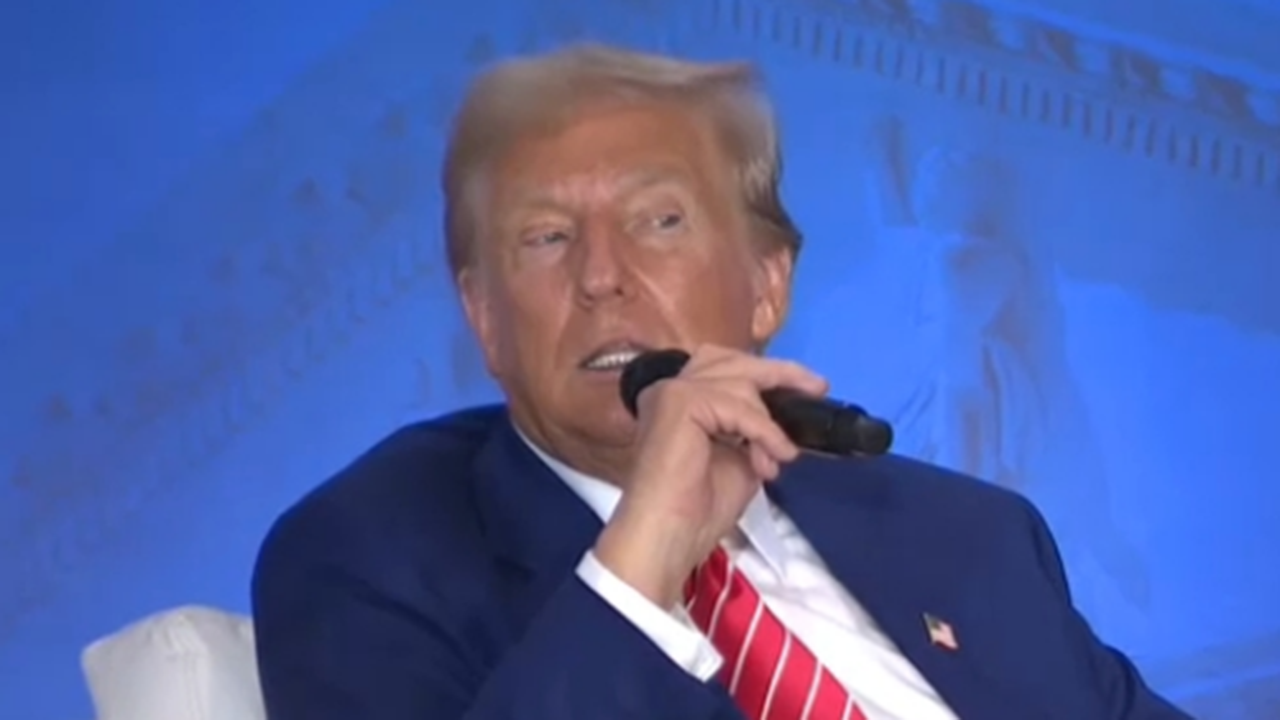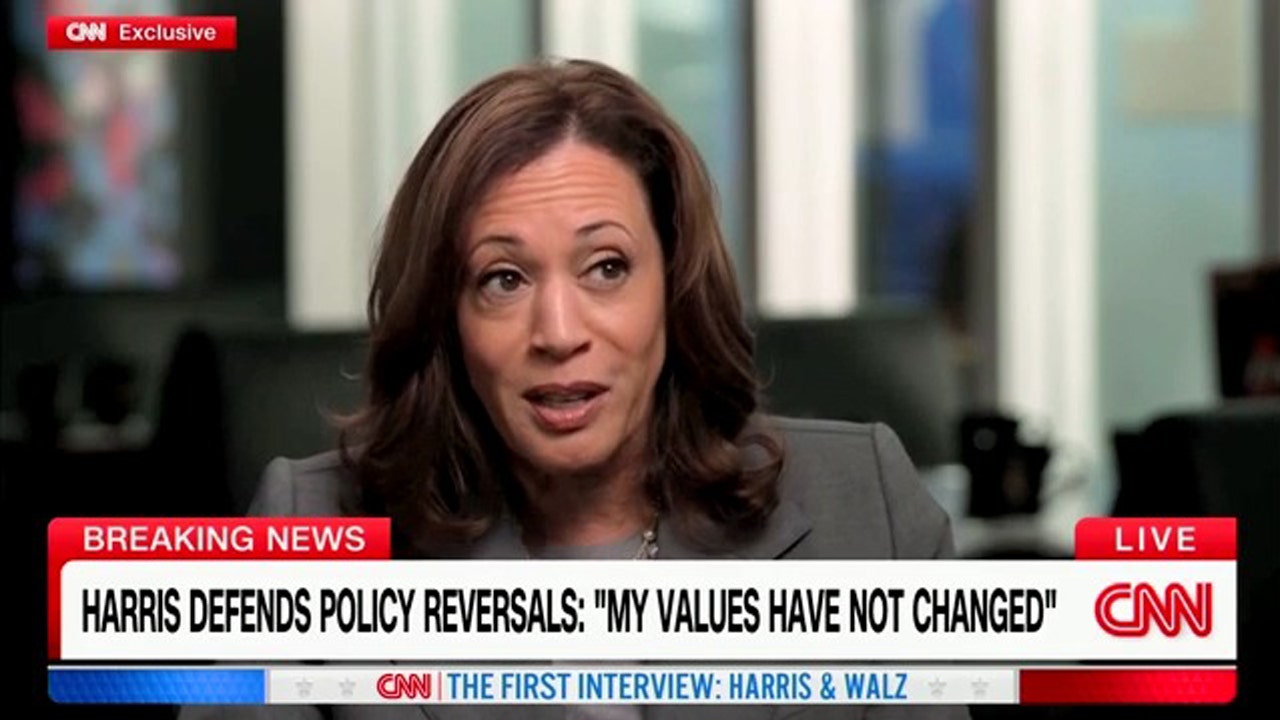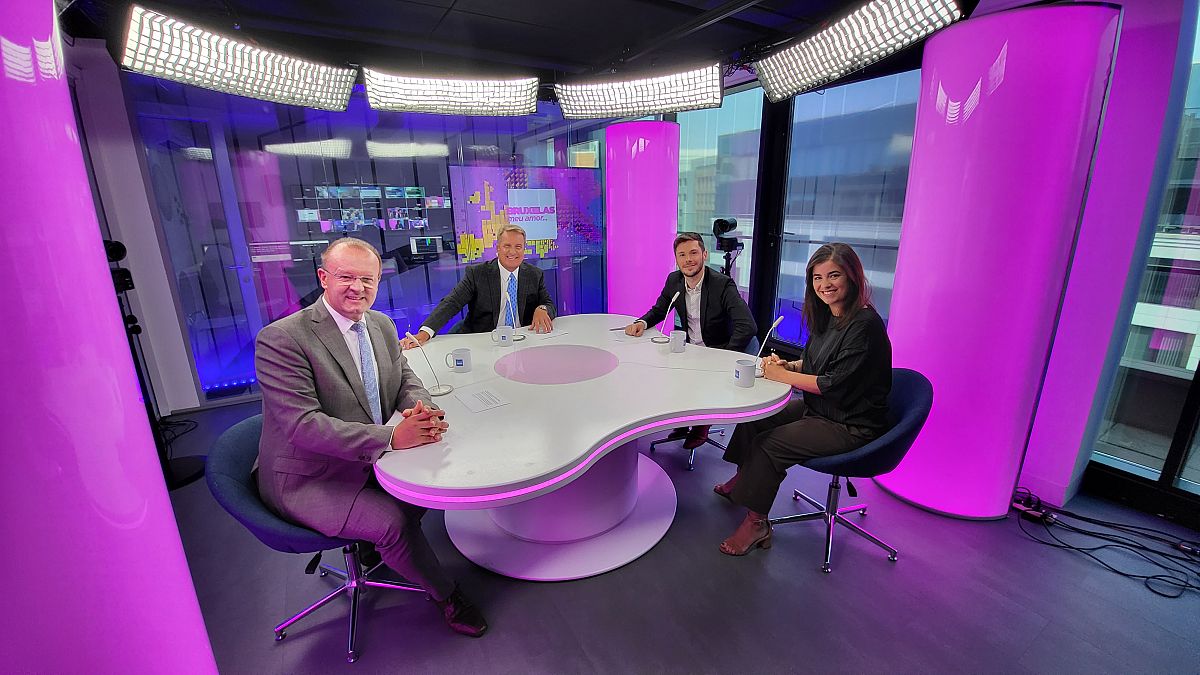Southwest
3 Native American tribes seeking rights to Colorado River water in $5B settlement

A proposed water rights settlement for three Native American tribes that carries a price tag larger than any such agreement enacted by Congress took a significant step forward late Monday with introduction in the Navajo Nation Council.
The Navajo Nation has one of the largest single outstanding claims in the Colorado River basin and will vote soon on the measure in a special session. It’s the first of many approvals — ending with Congress — that’s needed to finalize the deal.
Climate change, the coronavirus pandemic and demands on the river like those that have allowed Phoenix, Las Vegas and other desert cities to thrive pushed the tribes into settlement talks. The Navajo, Hopi and San Juan Southern Paiute tribes are hoping to close the deal quickly under a Democratic administration in Arizona and with Joe Biden as president.
PLUMBING PROBLEM AT GLEN CANYON DAM THREATENS WATER SUPPLY OF COLORADO RIVER SYSTEM
A landmark 1922 agreement divided the Colorado River basin water among seven western states but left out tribes. The tribes are seeking water from a mix of sources: the Colorado River, the Little Colorado River, aquifers and washes on tribal lands in northeastern Arizona.
Nearly one-third of homes on the Navajo Nation, which stretches across 27,000 square miles of Arizona, New Mexico and Utah, don’t have running water. Many homes on Hopi are similarly situated.
San Juan Southern Paiute will vote on the settlement within weeks, tribal President Robbin Preston Jr. said in an email. Along with guaranteed water deliveries, the tribe is asking Congress to approve a treaty it signed with the Navajo Nation in 2000 to establish an 8.4 square-mile reservation within the Navajo reservation.
A windmill draws water for livestock in Leupp, Arizona, on the Navajo Nation on March 9, 2024. A proposed water rights settlement for three Native American tribes that carries a price tag larger than any such agreement enacted by Congress took a significant step forward late on May 13, with introduction in the Navajo Nation Council. (AP Photo/Felicia Fonseca)
“We will have economic opportunities that our tribal members have never seen before, and which will give hope and pride to our people,” Preston said.
Without a settlement, the tribes would be at the mercy of courts. Already, the U.S. Supreme Court has ruled that the federal government is not bound by treaties with the Navajo Nation to secure water for the tribe. Navajo has the largest land base of any of the 574 federally recognized tribes and is second in population with more than 400,000 citizens.
A separate case that has played out over decades in Arizona over the Little Colorado River basin likely will result in far less water than the Navajo Nation says it needs because the tribe has to prove it has historically used the water. That’s hard to do when the tribe hasn’t had access to much of it, Navajo Attorney General Ethel Branch said.
Congress has enacted nearly three dozen tribal water rights settlements across the U.S. since 1978. Federal negotiation teams are working on another 22 settlements involving 34 tribes in nine states, the Interior Department said.
The costliest one enacted by Congress was for the Confederated Salish and Kootenai Tribes in Montana at $1.9 billion. The Navajo, Hopi and San Juan Southern Paiute tribes are seeking more than $5 billion in their settlement.
About $1.75 billion of that would fund a pipeline from Lake Powell, one of the two largest reservoirs in the Colorado River system, on the Arizona-Utah border. The settlement would require the U.S. Bureau of Reclamation to complete it by the end of 2040.
From there, water would be delivered to dozens of tribal communities in remote areas.
“Whatever funding we walk away with is funding we don’t otherwise have,” Branch said. “It will be a challenge.”
The Navajo Nation has settled its claims to the Colorado River basin in New Mexico and Utah. It’s separately pursuing two other much smaller settlements in New Mexico.
Arizona — situated in the Colorado River’s Lower Basin with California, Nevada and Mexico — is unique in that it also has an allocation in the Upper Basin. Under the settlement terms, Navajo and Hopi would get about 47,000 acre-feet in the Upper Basin — nearly the entire amount that was set aside for use at the Navajo Generating Station, a coal-fired power plant that shut down in late 2019. Navajo previously had agreed not to seek that water for the 50 years prior to 2019.
The proposal also includes a combined 9,500 acre-feet per year of water from the Colorado River’s Lower Basin for Navajo and Hopi. Navajo additionally would have the right to draw 40,780 acre-feet from the Little Colorado River — about one-third of what’s estimated to reach the reservation annually.
An acre-foot of water is roughly enough to serve two to three U.S. households annually.
Arizona, in turn, gets certainty in the amount of water available throughout the state as it’s forced to cut back as the overall supply diminishes. Navajo and Hopi, like other Arizona tribes, could be part of that solution if they secure the right to lease water within the state that could be delivered through a canal system that already serves metropolitan Tucson and Phoenix.
The two tribes came close to reaching a pact to settle water rights in Arizona in 2012, but the tentative deal fell through. This time around, Navajo officials launched a public education campaign.
They held lengthy community meetings with translations in Navajo — “tó bee há haz’ a” meaning “water right,” for example — and described water’s role in the tribe’s creation story and in ceremonies. They explained complicated water law, past attempts to settle and what’s at stake if the settlement fails.
In Leupp, the audience mostly asked about immediate needs: fixing the electricity on the water pump, improving roads and drilling wells.
Marlene Yazzie recalled her mother hitchhiking more than 100 miles to pressure tribal officials for electricity and water — which never came. Yazzie herself relies on water hauled to her home in nearby Birdsprings for washing, drinking and for her livestock.
“How many more years do we have to wait?” she asked.
Read the full article from Here

Southwest
Dallas Police Department Officer Darron Burks 'executed' in targeted attack, chief says
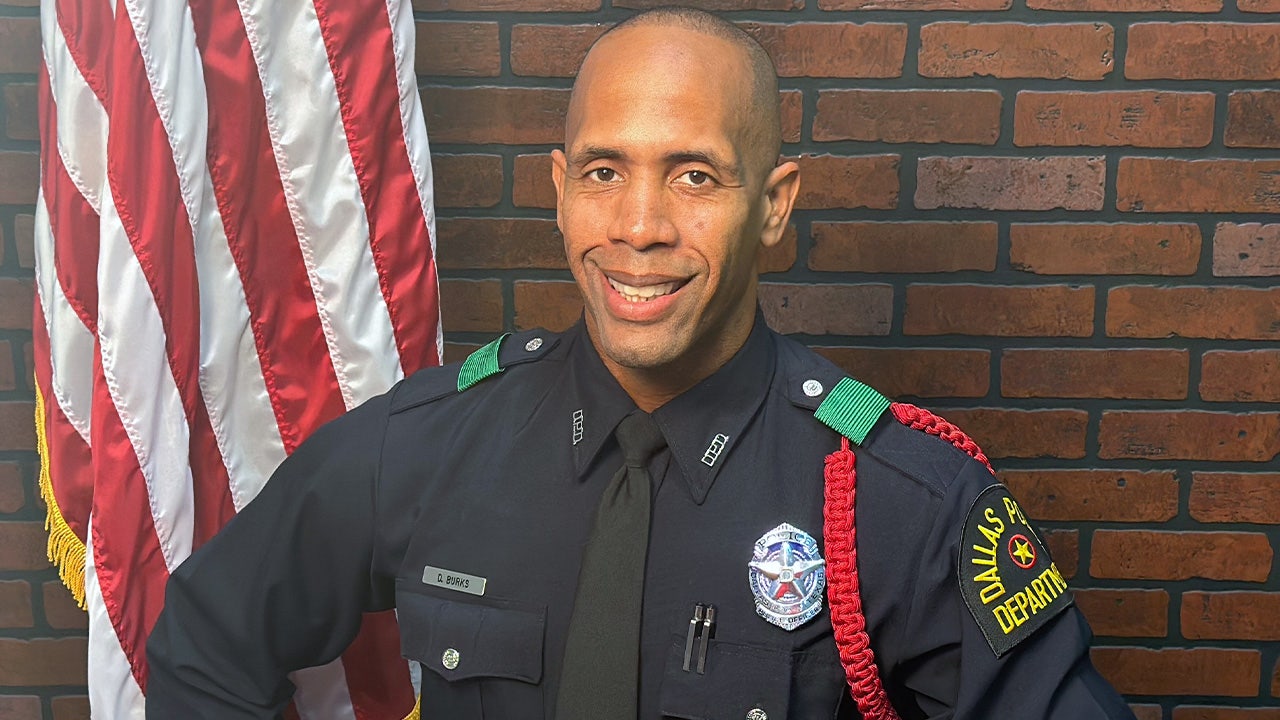
The Dallas Police Department provided an emotional update after Officer Darron Burks was shot and killed, saying that the former high school teacher was “executed” while in the line of duty.
In a press conference Friday, Dallas Police Chief Eddie Garcia said that the department had lost a “brother” and a “hero” following the shooting.
“As a department and as a family, we are devastated,” Garcia said. “Last night we lost a brother, a hero. Officer Darron Burks was a son, a nephew, a friend to many, and he was senselessly and tragically murdered in the line of duty.”
DALLAS POLICE OFFICER KILLED, 2 OTHERS INJURED: ‘WE LOST ONE OF OUR OWN’
Officer Darron Burks, 46, was killed in a shooting in Oak Cliff, and two other responding officers were injured late Thursday night at approximately 10 p.m. (Dallas Police Department)
The shooting, which happened around 10 p.m. Thursday night near the Oak Cliff Community Center, killed Burks and wounded two other officers. The suspected gunman, identified as 30-year-old Corey Cobb-Bey, was killed in a shootout with police after a highway chase.
“We came close to losing other officers,” Garcia said. “Officers who put their lives on the line to protect their brother, and it is by the grace of God that they are still with us today.”
The chief of police said that the officers were “targeted” by Cobb-Bey.
Our officers were targeted by nothing more than the uniforms that they wear.
“Our officers were targeted by nothing more than the uniforms that they wear and for the brave and honorable job that they do,” he said. “I want to be clear here, the word ambush has been thrown around in the last 24 hours. That is not what happened here. Officer Burks was executed.”
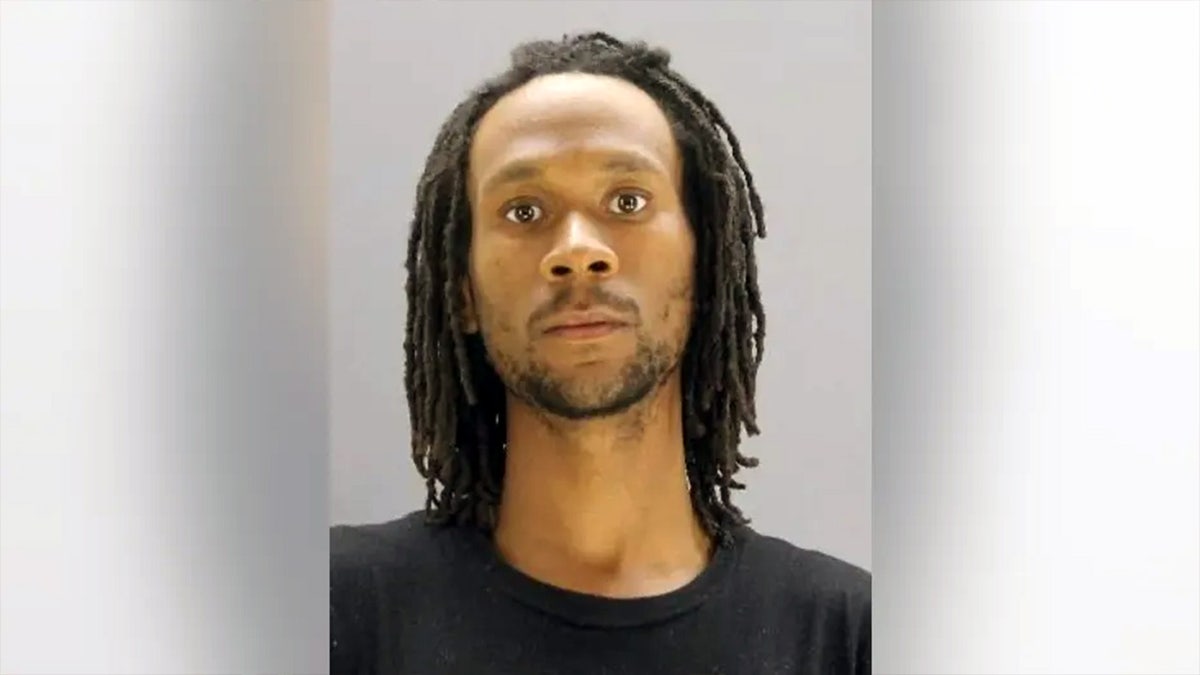
Garcia said the shooting suspect, 30-year-old Corey Cobb-Bey, approached Burks while he was waiting in a parking lot between calls. Shortly after approaching him, he pulled out a handgun and shot him. (Dallas Police Department)
Garcia revealed that Cobb-Bey approached Burks and struck up a conversation, while recording the encounter on a cellphone, before pulling out a handgun and opening fire. Police said that they have no evidence that Burks and Cobb-Bey knew each other.
TEXAS SUSPECT’S ALLEGED VIOLENT RAMPAGE, INCLUDING STABBING AND CRASHING INTO PEOPLE, CAUGHT ON VIDEO
“Cobb-Bey approached Burks and talked with him briefly at the driver’s side of the window as he recorded the encounter with a cellphone,” he said. “The suspect then pulled out a handgun and executed Officer Burks as he sat in his vehicle.”
Police said they got a 911 call about an officer in distress. Responding officers found Burks in his marked patrol vehicle critically injured.
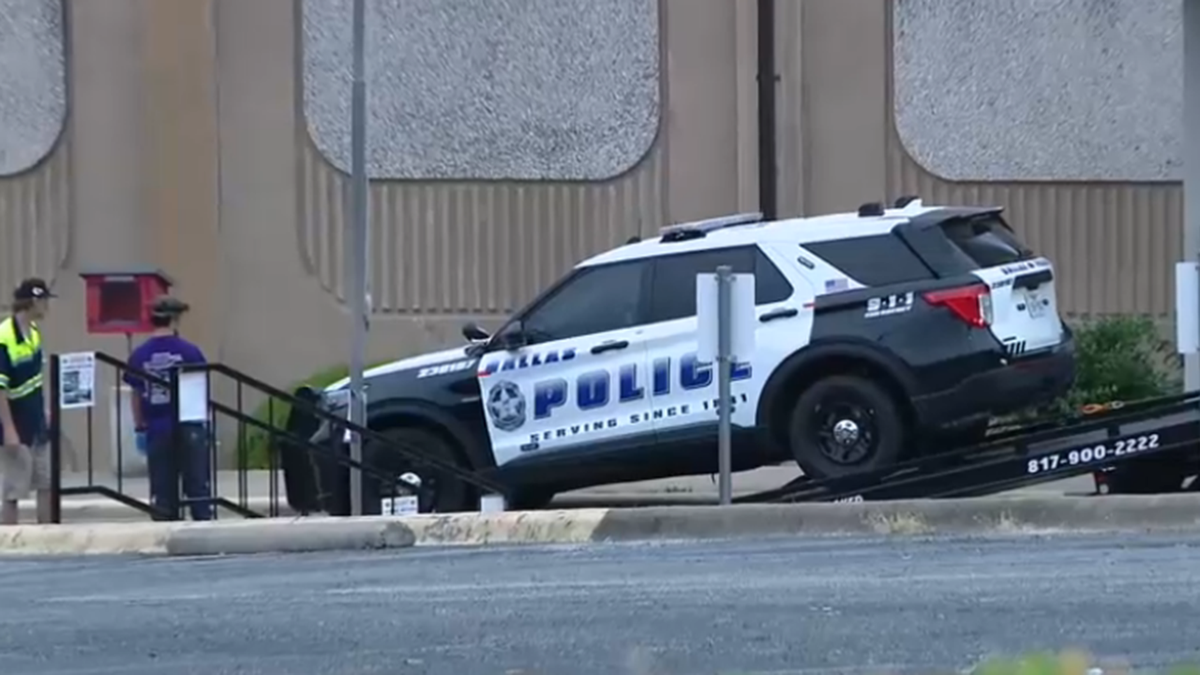
A Dallas Police Department vehicle is seen being towed away from the scene where the officers were shot on Thursday. (KDFW)
At 10:11 p.m., Senior Corporal Jamie Farmer pulled into the parking lot after responding to a call for backup. Farmer was met with gunfire from Cobb-Bey. When Farmer returned fire, Cobb-Bey grabbed the shotgun and fired at Farmer, hitting him in the leg.
A minute later, Senior Corporal Karissa David arrived on the scene.
TEXAS POLICE ESCORT LATE OFFICER’S SON TO FIRST DAY OF SCHOOL
The Cobb-Bey ran toward David, shooting at her multiple times while she exited her vehicle.
David was shot in the face, according to police.
The officers exchanged gunfire with the suspect, and two additional officers were shot.
The suspect was shot and killed at the end of a high-speed police chase on Interstate 35 from Dallas to Lewisville.
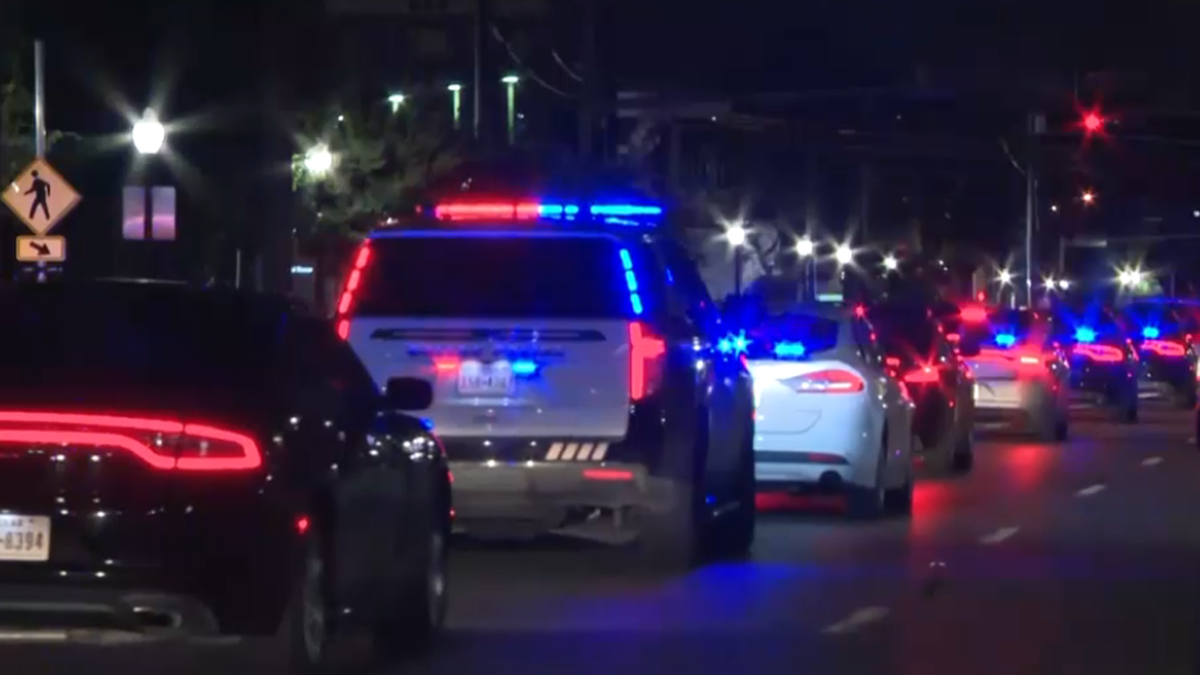
A procession of police vehicles roll through Dallas early Friday, after an officer was killed in the line of duty. (KTVT)
Burks was a former high school math teacher at the Texas Can Academy’s Pleasant Grove Campus, whose passion for helping his community led him to enroll in the police academy, FOX 4 reported, citing sources.
“Last year, Officer Burks bravely decided to leave the field of education to serve our city as a member of the Dallas Police Department. His commitment to serving others, both as a teacher and as a police officer, exemplified his dedication to making a positive impact on the lives of those around him,” wrote Tina Shaw, the principal at Texas Can Academy’s Pleasant Grove Campus.
One former student, Adrian Coleman, said that Burks mentored troubled youths.
“As a troubled youth, he made sure to instill knowledge and provide me with the tools I needed to graduate, to be a man out here in this world,” Coleman told the local outlet. “I am very thankful for him and the time he spent with me.”
A rookie police officer, Burks first entered the Dallas Police Academy last year.
Fox News Digital has reached out to the Dallas Police Department for comment.
Read the full article from Here
Los Angeles, Ca
Driver runs across 101 Freeway after slamming into overturned sedan

A hit-and-run driver remains outstanding after they collided with an overturned vehicle on the 101 Freeway and fled on foot.
Preliminary information indicates that police had responded to the eastbound span of the 101 near Balboa Boulevard in Encino just before 3 a.m. Saturday on reports of an overturned red sedan blocking traffic.
As first responders arrived on scene, another vehicle – said to be a gray Nissan – barreled into the overturned sedan.
Footage obtained by KTLA shows the Nissan careening across the freeway before smashing into the right shoulder wall. That driver was taken to a nearby hospital in unknown condition.
The driver of the red sedan fled after the collision; they were seen on video making their way towards the shoulder on foot.
As of 6 a.m. Saturday, they had not been apprehended.
Los Angeles, Ca
San Bernardino County man arrested in child predator operation

Deputies arrested Guy Schneider, 63, of Yucaipa in an undercover child predator operation where he allegedly arranged to meet with a 13-year-old girl for sexual acts.
The 13-year-old girl was in fact an alias created by Perris Sheriff’s Station Special Enforcement Team deputies for this investigation. They received a response from Schneider ultimately expressing his desire to meet and perform sex acts, according to the Riverside County Sheriff’s Department.
Deputies arranged to meet Schneider on Friday and took him into custody without incident. During his arrest, deputies found he also possessed two firearms.
Schneider was booked into the Robert Presley Detention Center and is being held on a $1,000,000 bail.
The investigation team asks anyone with information about this case to contact Deputy Hartert at the Perris Sheriff’s Station: 951-210-1000.
-

 Connecticut1 week ago
Connecticut1 week agoOxford church provides sanctuary during Sunday's damaging storm
-
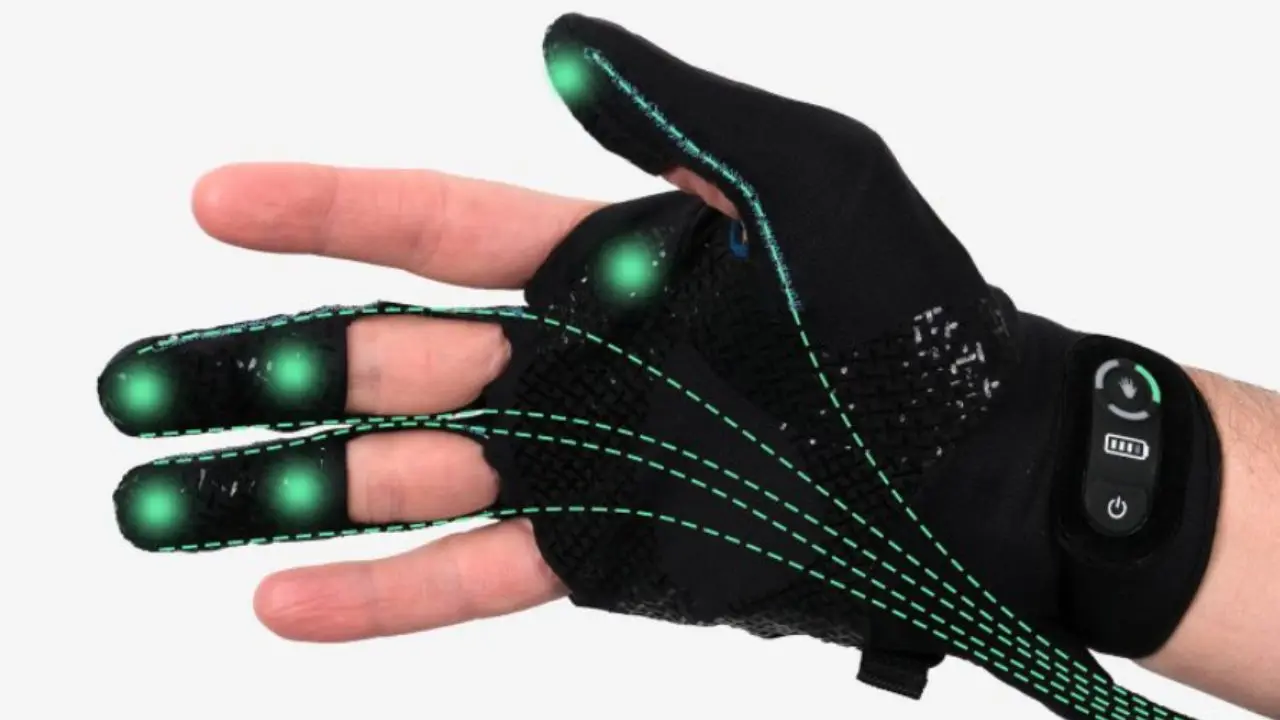
 Technology1 week ago
Technology1 week agoBreakthrough robo-glove gives you superhuman grip
-
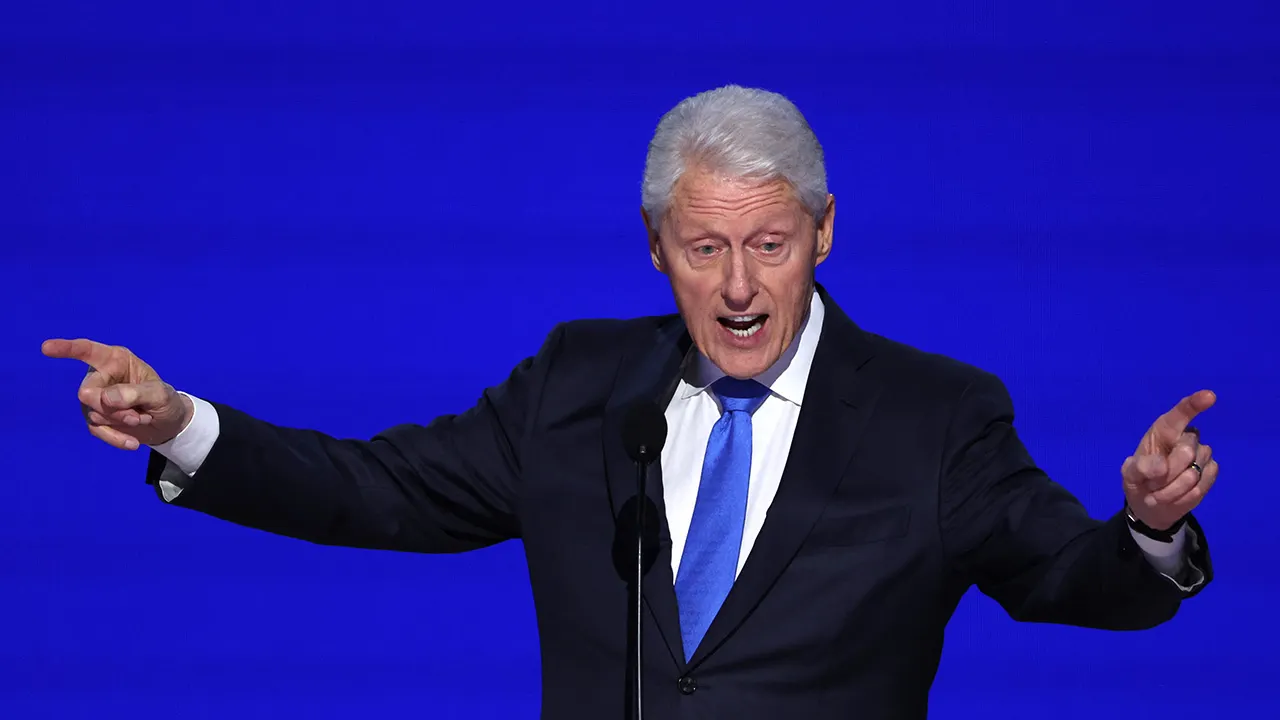
 Politics1 week ago
Politics1 week agoClinton lauds Biden as modern-day George Washington and president who 'healed our sick' in DNC speech
-

 Politics1 week ago
Politics1 week ago2024 showdown: What happens next in the Kamala Harris-Donald Trump face-off
-

 News1 week ago
News1 week agoWho Are Kamala Harris’s 1.5 Million New Donors?
-
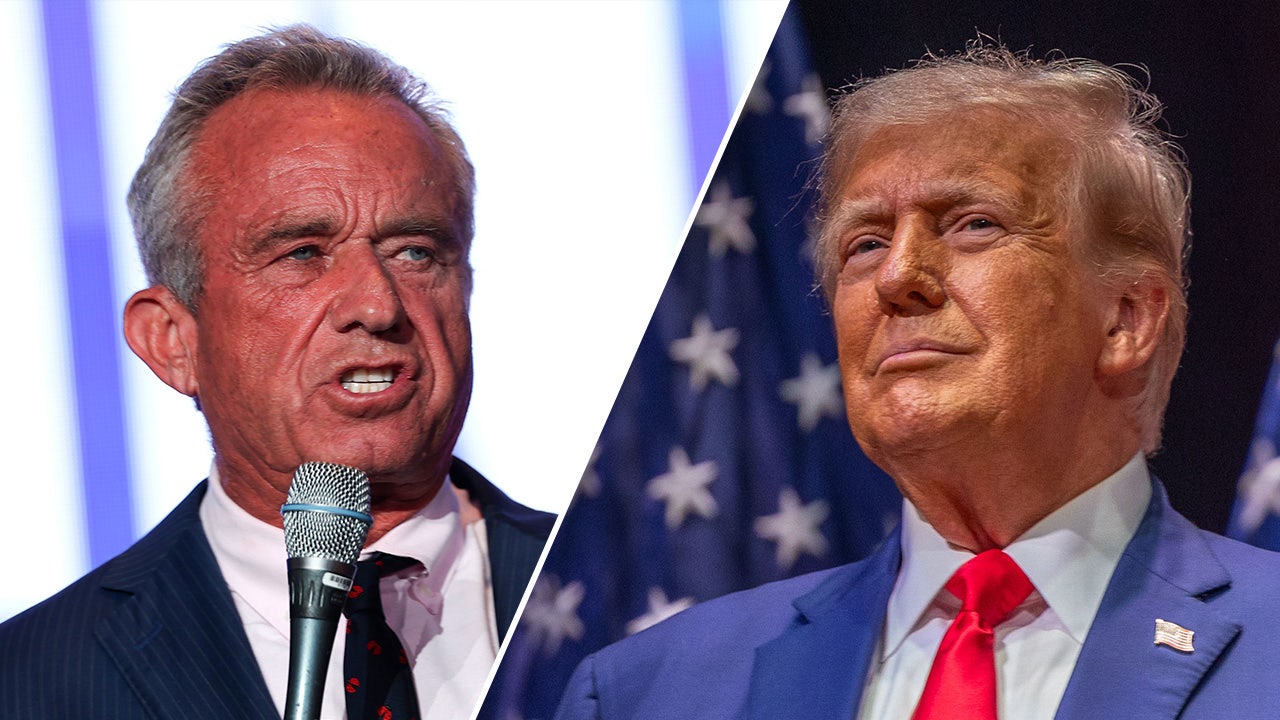
 Politics1 week ago
Politics1 week agoTrump taunted over speculated RFK Jr endorsement: 'Weird as hell'
-
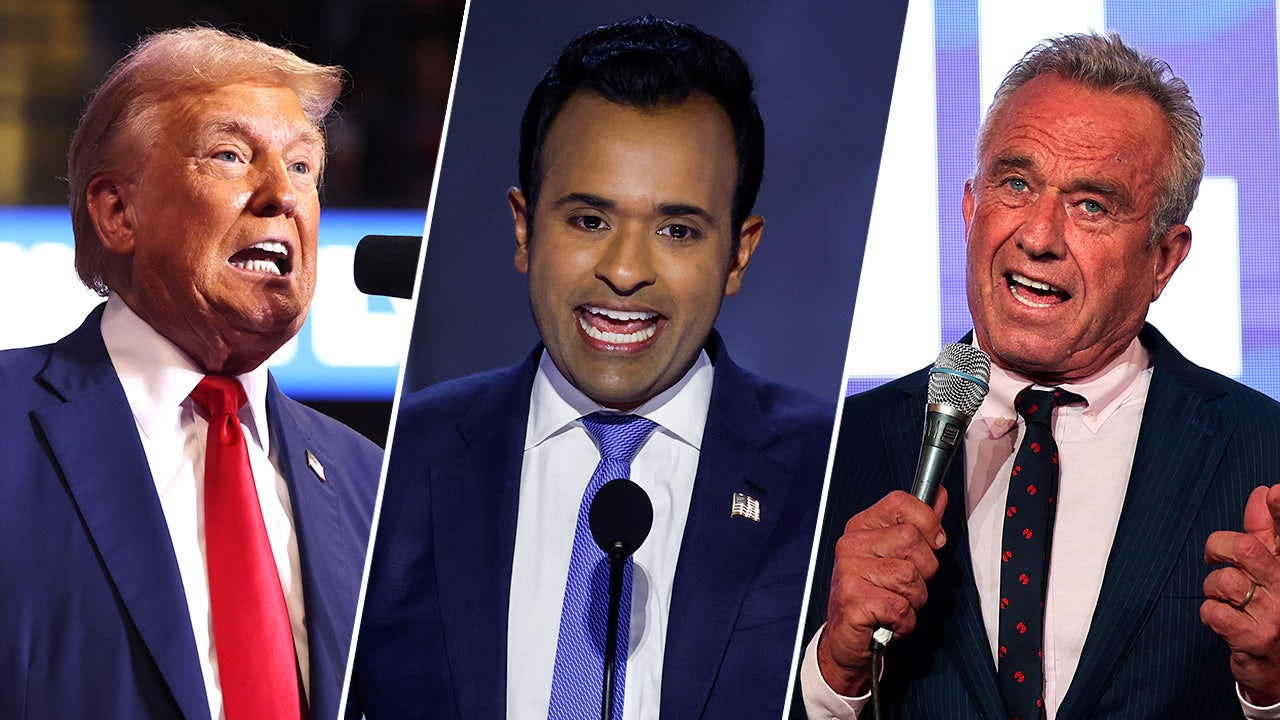
 Politics1 week ago
Politics1 week agoVivek Ramaswamy sounds off on potential RFK Jr. role in a Trump administration
-

 World6 days ago
World6 days agoPortugal coast hit by 5.3 magnitude earthquake






